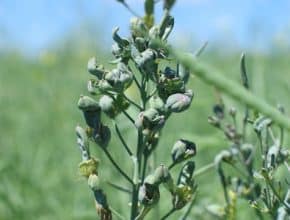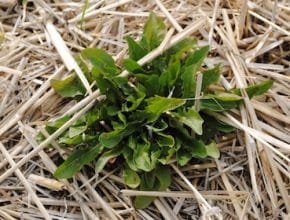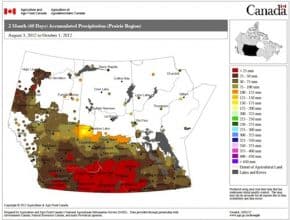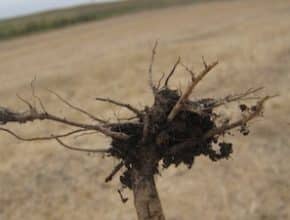Sclerotinia and blackleg remain the top two most important canola diseases, but aster yellows are a hot topic after a bad year in 2012. The Canola Council of Canada agronomy team came up with the following 10 questions about aster yellows. Chrystel Olivier, research scientist with Agriculture and Agri-Food Canada in Saskatoon, answered them the best she could given what…
Canola Watch Posts
-
-
Generally pleasant fall weather provides an opportunity for fall weed control, and for soil sampling. When it comes to soil sampling, how the samples are collected will effect what information can be gleaned from the results. Submitting one composite 0-6” sample from 20 randomly distributed sample locations in each field this fall may provide the simplest, least expensive snapshot of…
-
-
It has been a very dry two months, as the map shows. Several products with high carryover risk are broken down almost exclusively through hydrolysis — the process of water splitting the herbicide molecule in two. Hydrolytic breakdown of herbicides decreases in drought, as you can imagine, and adsorption of herbicide to soil particles is increased, both of which will…
-
Dry soils will be difficult to penetrate, and tillage will destroy standing stubble and its snow-catching capability. We can’t predict winter weather, but this extra moisture may be valuable next spring. Turning the soil can also cause a heavy flush of weeds from long buried seeds that have lost their dormancy, and burial of weed seeds and shattered canola seed…
-
Not a regular soil sampler? If you're interested in starting, this is as good a time as any to start. The more you test, the more you can learn from the numbers. Benchmark samples collected from the same places for years will tell you more than a random sample done once. To see trends, you need several years. You can…
-
The next issue of Canola Digest, the November issue, will include a Diagnostic Dilemmas feature about a grower puzzled by very low seedling emergence in his canola field. Crusting and cutworms were factors, but so was the 7.1-gram thousand seed weight. At the grower's rate of 5 lb./ac., this amounted to 8.7 seeds per square foot. Seeding only 8.7 seeds…
-
-
Many canola growers harvested lower than expected yields in 2012. So what happened? Why did the canopy look good enough to yield much higher than it did? In many fields, it was quite likely a combination of factors, led by a very hot July. This week’s Canola Watch looks back on the year, and highlights these key contributing factors, providing…




